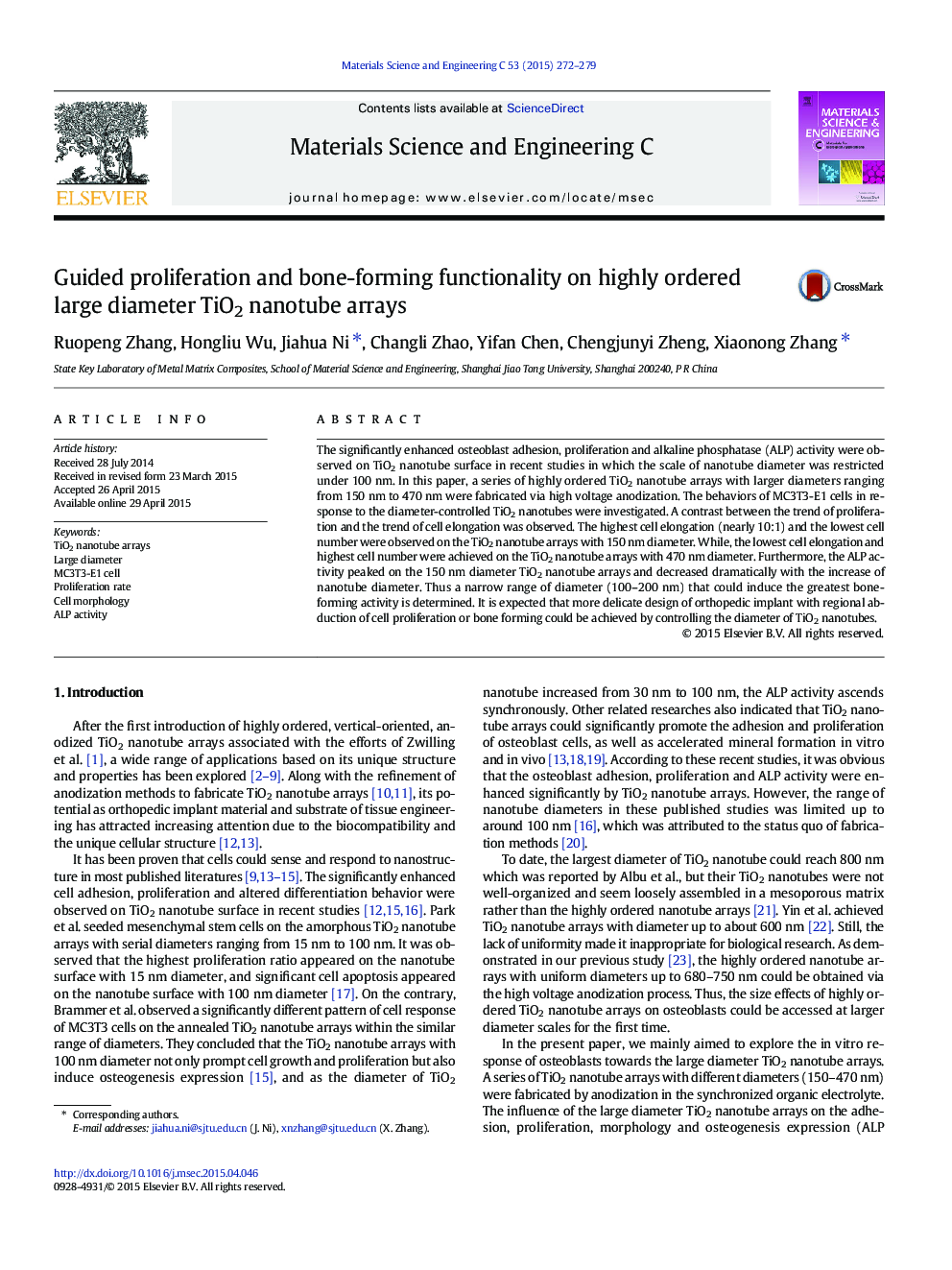| Article ID | Journal | Published Year | Pages | File Type |
|---|---|---|---|---|
| 1428103 | Materials Science and Engineering: C | 2015 | 8 Pages |
•Improved anodization methods leading to more ordered large diameter TiO2 nanotubes•Significantly enhanced ALP activity was observed on 150 nm diameter TiO2 nanotubes.•The highest cell density was observed on 470 nm diameter TiO2 nanotube arrays.•Similar cell response was observed on the amorphous and anatase phased nanotube surface.
The significantly enhanced osteoblast adhesion, proliferation and alkaline phosphatase (ALP) activity were observed on TiO2 nanotube surface in recent studies in which the scale of nanotube diameter was restricted under 100 nm. In this paper, a series of highly ordered TiO2 nanotube arrays with larger diameters ranging from 150 nm to 470 nm were fabricated via high voltage anodization. The behaviors of MC3T3-E1 cells in response to the diameter-controlled TiO2 nanotubes were investigated. A contrast between the trend of proliferation and the trend of cell elongation was observed. The highest cell elongation (nearly 10:1) and the lowest cell number were observed on the TiO2 nanotube arrays with 150 nm diameter. While, the lowest cell elongation and highest cell number were achieved on the TiO2 nanotube arrays with 470 nm diameter. Furthermore, the ALP activity peaked on the 150 nm diameter TiO2 nanotube arrays and decreased dramatically with the increase of nanotube diameter. Thus a narrow range of diameter (100–200 nm) that could induce the greatest bone-forming activity is determined. It is expected that more delicate design of orthopedic implant with regional abduction of cell proliferation or bone forming could be achieved by controlling the diameter of TiO2 nanotubes.
